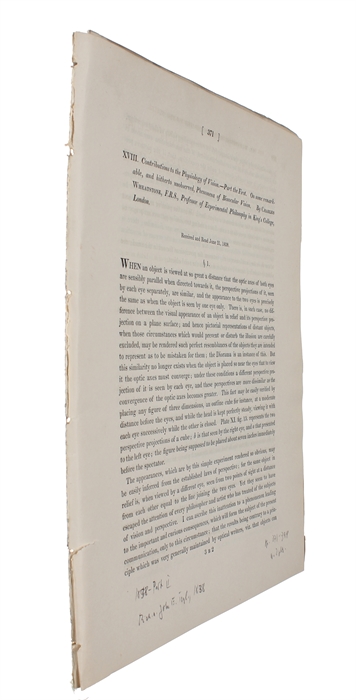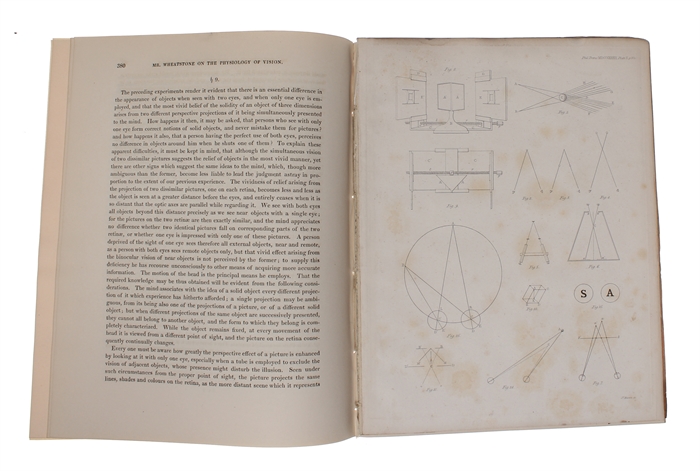WHEATSTONE, CHARLES. - STEREOSCOPIC VISION DISCOVERED.
Contributions to the Physiology of Vision.- Part the First. On some remarkable, and hitherto unobserved, Phenomena of Binocular Vision. Received and Read June 21, 1838. (+) The Bakerian Lecture. - Contributions to the Physiology of Vision. Part the Second (continued).
(London, Richard and John E. Taylor, 1838 a. 1852).
4to. No wrappers as extracted from "Philosophical Transactions" 1838 - Part II. Pp. 371-394 and 2 engraved plates. Light browning to plates. + 1852- Part I. pp. 1-17 and 1 engraved plate. A dampstain to plate.
First appearance of these classic paper in physiological optics in which Wheatstone discovered the stereoscopic vison of the human eye.
Stereopsis was first described by Wheatstone in 1838 (in the paper offered). In 1840 he was awarded the Royal Medal of the Royal Society for his explanation of binocular vision, a research which led him to make stereoscopic drawings and construct the stereoscope. He showed that our impression of solidity is gained by the combination in the mind of two separate pictures of an object taken by both of our eyes from different points of view. Thus, in the stereoscope, an arrangement of lenses or mirrors, two photographs of the same object taken from different points are so combined as to make the object stand out with a solid aspect. Sir David Brewster improved the stereoscope by dispensing with the mirrors, and bringing it into its existing form with lenses.
"As the inventor of the stereoscope, later developed by Brewster, Wheatstone found himself - to his own surprise - the first since Leonardo da Vinvi to discuss depth perception in terms of the different image received by the eye..."(DSB XIV, p. 290).
Garrison & Morton No. 1498.
Order-nr.: 42847



